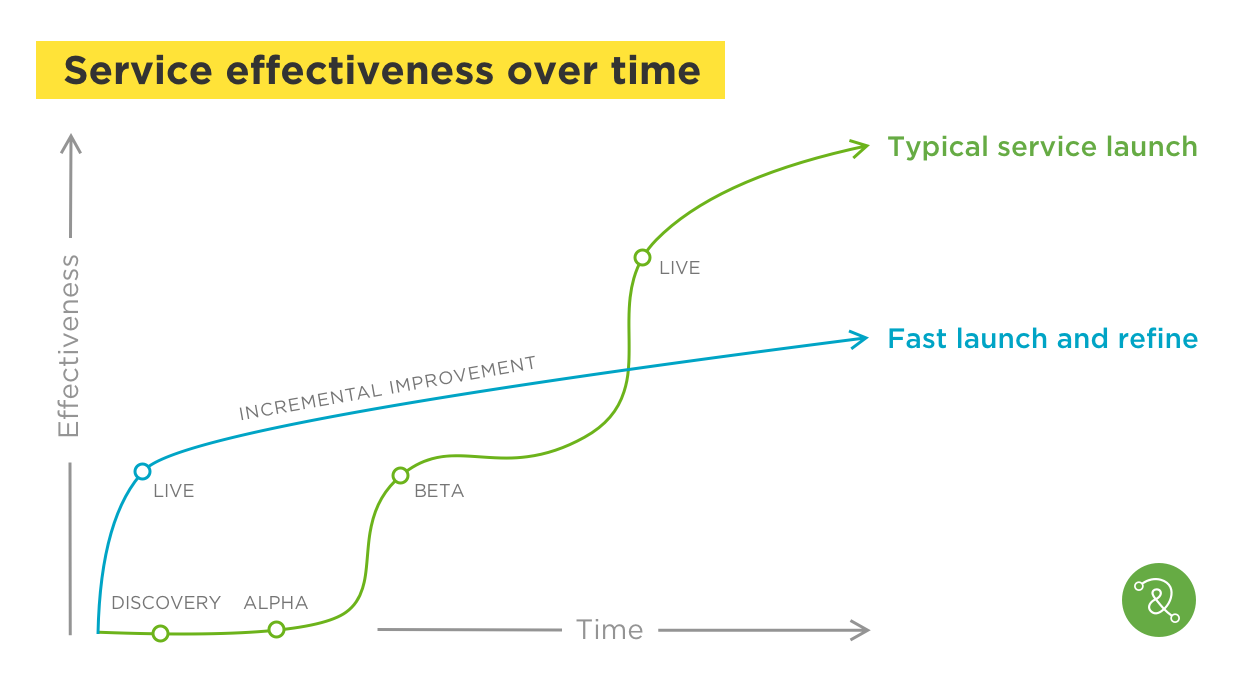In order to make transformation more effective and beneficial in the long term, user-centred design must come into play, says Sam Menter, Co-founder and Managing Director of Mace & Menter
When we are in crisis, we need to think and react quickly, responses need to be fast and effective. In the last few weeks, some government departments have accelerated change and launched new services at record-speed, standing up public services in days rather than months.
Through necessity, we create fast solutions to complex evolving problems. Not perfect but live and working. Perfection as the enemy of done. A world apart from the pre-COVID process and pace of change.
Each new live or fast-adapted service represents a significant achievement by teams working under intense pressure.
Under these conditions one might assume there’s little space for a user-centred approach. After all, involving users in the design and functionality of a service means time and effort which, right now, are in scarce supply.
In fact, the opposite is true: working in this way presents a huge opportunity to get fast actionable insight that can improve live services so they quickly become more effective, more useful, more impactful, longer-lasting and ultimately more user-centred.
Flipping our approach
As designers, we often try to imagine a future that doesn’t yet exist so we can design for that future, but the future we currently inhabit is one that few predicted or designed for. Because of this, public services are springing up and being adapted responsively through necessity not design.
Pre-COVID projects were structured around the hard-won process outlined in the Government Service Standard: discovery to alpha to beta to live. The underlying principle behind this approach lies in accepting that we work with ambiguity and probably don’t know the shape of the service at the start of the design process.
At a high level we probably know what the service needs to do, but the process is designed to help us understand how to do it in an effective way based on the needs of the people using it.
We build in research to understand the problem and the space around it before defining solutions. It means taking time to explore different solutions before firing off in a particular direction.
Right now this process has, quite rightly, been flipped on its head. Services are being launched to live in record-breaking time. Delivery teams have been working through the night to launch services in days and weeks that under normal circumstances would have taken months.
The risk here is that untested design decisions can mean services are hard to use, less understandable and significantly less effective.
So where does this leave a user-centred approach?
There are some parallels here with the shift from waterfall to agile in software development. People were frustrated by the pace of waterfall with its extensive requirements gathering and documentation process while developers preferred to start making something.
Agile meant we could build and refine as we went. But we still needed a steer on what would be effective to build before writing code. Enter the discovery phase, research designed to help designers and developers understand how people using a service need it to work before committing to a particular direction.
At first glance it doesn’t look like there’s much space for discovery in the current climate, we just need to launch and refine services as fast as possible. Of course we can’t delay launching a service that means someone can access an essential grant because their work has dried up, but we can think of these new or adapted services in a slightly different way.
Catnip for user researchers
A live service launched in days rather than months is catnip for user researchers. It presents a huge opportunity to gather insight. If we consider the live service a working prototype rather than a done deal, we can run discovery in parallel with the evolution of the service.
A live service means researchers and product owners can use it as a stimulus in remote one-on-one research to explore how people are using it, how well it’s meeting their needs, identifying what’s missing and where it can be improved.
We can also gather a multitude of statistics around the actual use of the service: where are people dropping out of the service, what are the questions they’re asking and what is the shape of the data coming in? Combining qualitative and quantitative insight like this is the most effective way to determine how to make a service more effective.
Pragmatic process
As researchers and designers we need to be adaptable and not precious about process. We need to work alongside service owners and delivery teams, testing and refining what’s there rather than disappearing for weeks and returning with a finessed presentation of prioritised user needs around a service that may no longer even be relevant!
We’ve been working with Bristol City Council on a project driven by the need to recruit more foster carers due to COVID. Initially, the work was tactical, fast research to uncover ways the public-facing elements of the service could be made more effective, but it quickly evolved into service discovery exploring the end-to-end experience of foster carers.
We uncovered what’s really going on in the three years it takes people to come to a decision about fostering. We identified the things that nudge people over the line, and the things that hold them back. We discovered some clues about how to make the fostering decision easier.
Fast tactical research on live services will always uncover strategic insight that has long-term value as well as the immediate things you can do right now to improve things.
Sharing insight for the common good
Right now, more than ever, we’re seeing a willingness to share insight that can help others. Bristol Council have encouraged us to share the fostering project insight with other public sector delivery teams in social care.
Where many teams are being forced to make decisions through guesswork, an increase in shared research insight will mean more effective services that more people can access.
Content is key
Making sure that everyone can access and understand the information they need has also become more important than ever. People are confused and frightened so information needs to be crystal clear and written in a way that is understandable by everyone.
I heard one instance where an employer thought they weren’t eligible to use the furlough scheme because of the way the scheme information was written and so was considering redundancies as an alternative. Not good.
Following a structured content design process, including testing live content with users and refining it based on feedback is critical. When we’ve been working with Scope on content design for COVID-related help and information, the testing has helped define missing information, highlight ambiguities, and ensure the tone of voice fits the situation.
Accuracy of information and ensuring people trust the content need to be prioritised.
User-centred design to support those on the margins
There’s a real risk that COVID increases the digital divide, so people on the margins are more excluded than ever from critical services. In the UK there are still 1.9 million households with no access to the internet and tens of millions more reliant on pay-as-you-go services to make phone calls or access healthcare, education and benefits online.
Designing services in a way that means they can be accessed by these groups is vital. We can’t assume everyone has a smartphone. What other mechanisms exist for people to access grants and information?
Again, including these people in research around services that have quickly been launched or adapted will mean their needs are considered and accommodated.
User-centred design as a mindset
User-centred design needs to be considered as a mindset rather than a project overhead. I’m optimistic that the current crisis is an opportunity to spread this mindset further across the public sector because access to public services is more important than ever.
User-centred design, in whatever shape it takes, will mean significantly more people are able to access and use the services they need to continue their lives.












